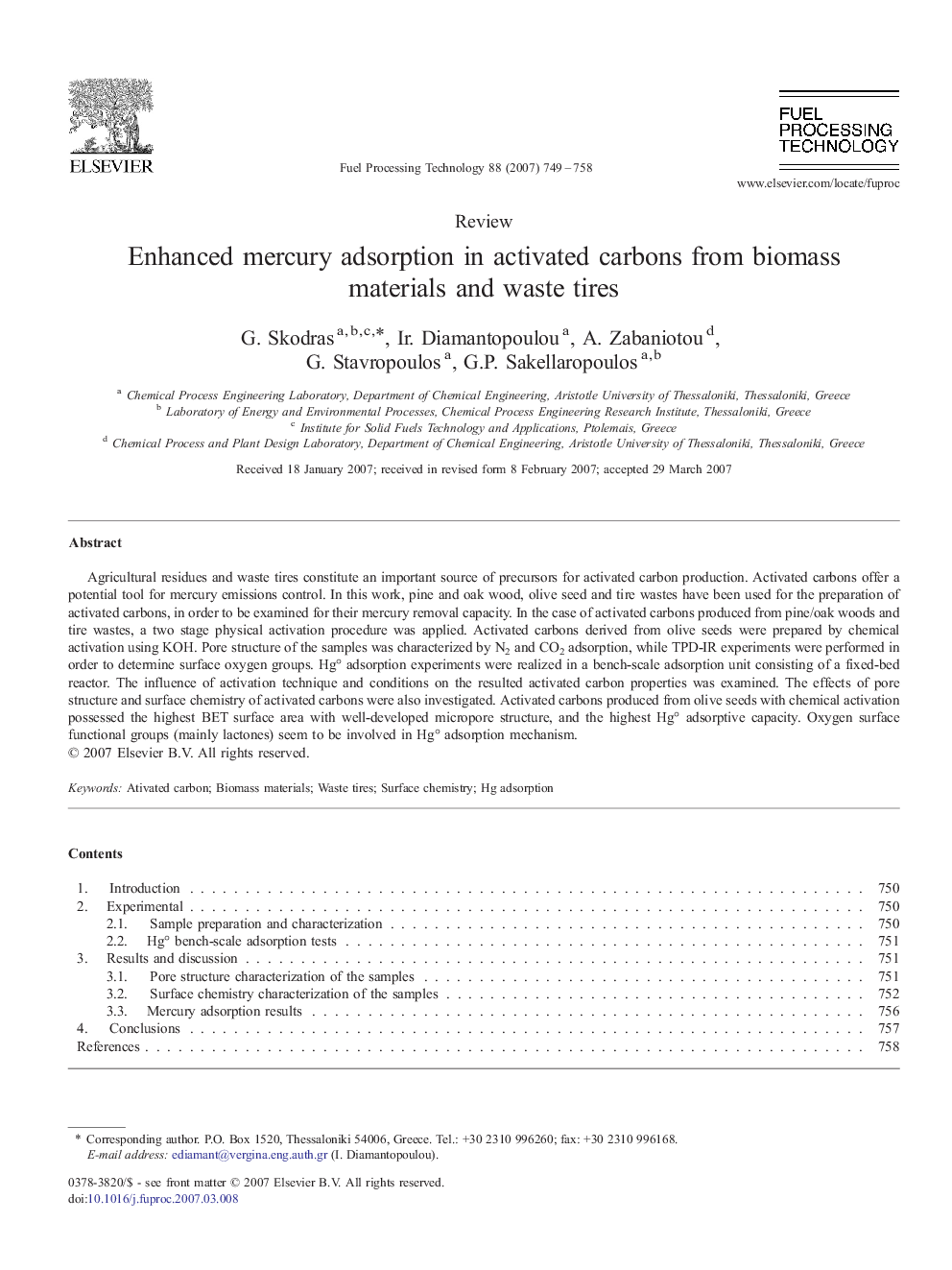| Article ID | Journal | Published Year | Pages | File Type |
|---|---|---|---|---|
| 211537 | Fuel Processing Technology | 2007 | 10 Pages |
Agricultural residues and waste tires constitute an important source of precursors for activated carbon production. Activated carbons offer a potential tool for mercury emissions control. In this work, pine and oak wood, olive seed and tire wastes have been used for the preparation of activated carbons, in order to be examined for their mercury removal capacity. In the case of activated carbons produced from pine/oak woods and tire wastes, a two stage physical activation procedure was applied. Activated carbons derived from olive seeds were prepared by chemical activation using KOH. Pore structure of the samples was characterized by N2 and CO2 adsorption, while TPD-IR experiments were performed in order to determine surface oxygen groups. Hg° adsorption experiments were realized in a bench-scale adsorption unit consisting of a fixed-bed reactor. The influence of activation technique and conditions on the resulted activated carbon properties was examined. The effects of pore structure and surface chemistry of activated carbons were also investigated. Activated carbons produced from olive seeds with chemical activation possessed the highest BET surface area with well-developed micropore structure, and the highest Hg° adsorptive capacity. Oxygen surface functional groups (mainly lactones) seem to be involved in Hg° adsorption mechanism.
